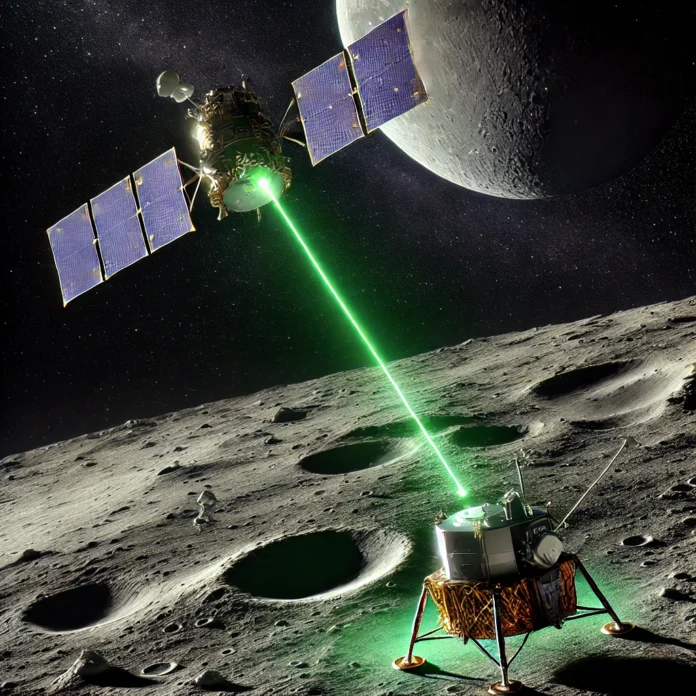NASA’s Lunar Reconnaissance Orbiter (LRO) recently engaged in a unique experiment involving Japan’s Smart Lander for Investigating Moon (SLIM). The LRO used its laser altimeter to target a retroreflector on the SLIM lander, a small device designed to reflect laser light back to its source. After several attempts, NASA successfully pinged the retroreflector, marking a significant milestone in lunar exploration and communications technology.
The Experiment’s Significance
The experiment involved directing laser pulses from the LRO, which orbits the Moon, to SLIM’s retroreflector—a simple yet effective array of mirrors mounted on the lander. The purpose of the retroreflector is to provide precise distance measurements between the orbiter and the lander, using the speed of light to calculate the time taken for the laser to return.
Initially, NASA’s attempts to hit the retroreflector were unsuccessful due to SLIM’s less-than-ideal landing position. The lander had touched down in a challenging location near the Shioli crater, complicating the use of its solar panels and placing the retroreflector in a difficult-to-ping position. Despite these challenges, NASA’s team persisted, eventually achieving success on May 24, 2024, during two successive orbits.
This successful “laser tag” experiment demonstrates the potential for using such retroreflectors in future lunar missions, potentially aiding in the precision landing of spacecraft and enhancing communication technologies for future missions, including NASA’s Artemis program.
Conclusion
The successful laser experiment between NASA’s LRO and Japan’s SLIM lander is a noteworthy achievement in lunar exploration. It highlights the potential of laser-based technologies to improve the precision of lunar landings and contribute to the success of future missions.


